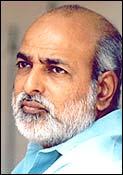 S
S
Kaya Tharan (Chrysalis) in Hindi is his first foray into feature filmmaking. Based on a short story by Malayalam writer N S Madhavan, it has the 1984 anti-Sikh riots as the backdrop. The film also deals with several issues affecting Indian society today, like reservations, conversion, minorities etc.
In this interview, the filmmaker candidly talks to Contributing Special Correspondent Shobha Warrier about the film, and the important issues it raises.
| |||||||||||
In 1984, I was in Bahrain (as The Hindu correspondent), but heard what happened in 1984 through my Sikh friends in Bahrain. I came back in 1986. Madhavan wrote the story much later.
Then, I got caught up with my work on Asianet, but the subject was on my mind all the time. It was on the backburner.
Also, while I knew I wanted to do the film, there wasn't a context to approach it. I think it was a part of my journalistic outlook that I need a 'peg' to look at something fresh, which I wasn't getting! When Godhra happened in 2002, suddenly, the whole thing fell into perspective in my mind and I got an entry point to the film.
It's not a straight narrative I have used: it goes back and forth.
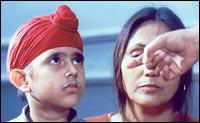 Was it a conscious decision to use such a narration?
Was it a conscious decision to use such a narration?
I hate simple narratives, especially in films. Narrative is a method of controlling somebody else's attention, and I must give space for escape from attention. That's where you make a democratic work of art. That is my peculiar theory. I made the film in a dialectic mode.
I have used a lot of surrealistic elements. The narrative is disrupted every once in a while through some alienating mechanisms, which, hopefully aren't there as additions, not organic to the story, but as a continuum. The alienating effect helps you to empathise more with the content rather than emotionally plunging headlong into it, getting lost and choked, and then coming out and forgetting about it.
What is the political statement you want to make through the film?
The minorities, whether religious, social or political, are not vulnerable to only one kind of political party. Yes, I am obviously against Hindutva and the extreme right philosophy, but it was during the Congress regime that 1984 happened. The attack was against a sub-sect of Hinduism, and not Muslims or Christians. So being a minority within your religion does not guarantee you safety either. That's the face of caste minority.
You are classifying what happened in 1984 as an attack against a minority. Wasn't there something beyond that?
If a Hindu had killed Indira Gandhi, would there have been riots by the Sikhs and Muslims against the Hindus? Impossible! 1984 happened because the Sikhs were an identifiable minority.You were able to attack them, and that is precisely the definition of a minority. If they were the majority, it would not have happened. Let's face it. It has to be a denominational minority; it need not be religious.
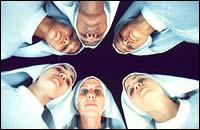 My question is: was it not more political in 1984? Many political leaders were directly involved in attacking the Sikhs.
My question is: was it not more political in 1984? Many political leaders were directly involved in attacking the Sikhs.
Yes, the State was involved. That is common for both Godhra and 1984. The machinery of the State was asked to stay away, and it allowed the killings to take place. There's no difference between Godhra and 1984. In Gujarat also, the police did not act!
In 1984, the army had no powers to shoot or intervene, because a section of the Congress party or the State felt 'these fellows should be taught a lesson.'
What I am saying is these are only differences of degree and not of kind, as in labelling a minority as religious or political or social.
You have also taken up the issue of conversion in the film.
There are several cross currents that the film is subjected to. Conversion is an issue there as well. All the contemporary issues are present in the film. I would say the film is politically autonomous, not pro-Congress or pro-BJP at all; it is not even a pro-Marxist film. I feel the Marxists in Kerala are as guilty about the tribal situation in Wayanad as anybody else.
I tried to look at these issues in an autonomous, artistic mode, not in a totally removed fashion.
This film is about identities in a plural society, and the dilemmas of belonging to a denominational identity. To the vast majority of Hindus, this is not a conscious problem.
There is an argument on these lines at the beginning of the film, and a counter argument too.
Compared to many other societies, don't you feel ours is still far more tolerant?
Ours is a potentially more tolerant society. Consider Hinduism as the overwhelming reality of India, and there's no other religion or other way of life, which allows democratic scope for anyone to participate. But increasingly, you are converting that to a narrow sectarian religious identity. That is my quarrel with those who espouse the Hindutva philosophy. In the name of championing Hinduism, they are actually corrupting it and making it a non-secular, terrible, inhumane kind of philosophy.
Yes, if you ask me, Muslim fundamentalism is also there; it is as bad or worse. There's no question about that. Christianity is also capable of terrible brutalities and insensitivities.
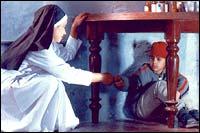 Are the political parties that practice divisive politics responsible for this division in society?
Are the political parties that practice divisive politics responsible for this division in society?
Yes, political parties do exploit the situation and feed on it. Political parties have a very proactive role in furthering division in terms of identities. We even have caste-based politics today.
You have dealt with many issues in your film and many political statements. How difficult was it for you as a filmmaker to make them look subtle, and not direct?
I hope I have not put them in a didactic manner. All the contemporary concerns are certainly woven to the whole fabric of the film. For me, a film is like any text; I don't think it needs to be simple or simplistic. I think the viewer, like the reader, must get up and see what is in the film. I am not interested in couch potatoes. So, like any text, it is a site for revisiting. When you visit it again and again, you will see further layers.
Was it a conscious decision on your part not to show violence in the film although the issue that you have tackled is one of the bloodiest?
Yes. The dominant imagery in media today is violence, so I don't think violence means much more to us anymore. You have to get more innovative to stand out.
Secondly, the more violence you see frontally, the more dangerous it is in terms of creating a humane statement because you are de-sensitising the person to violence. Along with violence, there is humaneness and fraternity in life, in society. Otherwise, we would have been dead by now, just by killing each other.
I also have those journalists in the film who covered the 1984 riots. The single biggest event was the Trilokpuri massacre where 350 Sikhs, men, women and children were killed in one night. This was covered by Rahul Bedi, Joseph Malekkan and Alok Thomal. The Trilokpuri tragedy is recorded in the film by Rahul Bedi acting as himself. He is the one who took it to the OPUCL, the Human Rights Commission. Even today, there's a commission of enquiry going into 1984. For him, it is like a punishment; every month, he is summoned by the Commission. This is the price he is paying for trying to expose a situation.
A film on the 1984 riots and with the Congress at the Centre, do you expect trouble? Of late, political parties have become quite intolerant.
I am happy the film has been censored, and they found nothing objectionable in terms of their guidelines. True, it is not just censors who decide the film. After the release, there are 'super censors' operating. We have so far seen that with the right, with the Hindutva forces, the VHP, the RSS etc.
That is a risk an artist has to take. After all, M F Husain's paintings get vandalised.
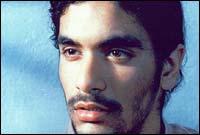 Why do you feel filmmakers have not depicted the trauma of the 1984 victims so far?
Why do you feel filmmakers have not depicted the trauma of the 1984 victims so far?
This is something that has nonplussed me, and many others. We have had films on everything, but the 1984 riots, for some reason, have not figured in films. Amitava Ghosh has written about it, but even in literature, I don't think there are many works.
It was a scar on the identity of the Sikhs. Unlike other denominations that have a larger bonding to look at, like the Muslims, the Sikhs are our own, relating to the majority. What is nice is, except for a fringe element of some extremist group, there is no vendetta in them. There is more inexplicable hurt.
It is in the same manner that we drove out Buddhism. We are far more intolerant of sectarian Hinduism than of sects outside of it. I don't think we have had any artistic work on the oppression of Buddhism. It is a great story waiting to be told.
In the end, Preet reasserts his identity by wearing a turban. Would you say that conversion is not the answer to the problems our society faces?
Absolutely. In this film, several levels of conversion take place, which the young man goes to investigate. There is also the question of whether the nuns in the convent were converting this mother and child. Although they are very peaceful, they are very firm and committed, and in their own way indoctrinate people but very humane.
The character emerges free from all of that, and arrives at an understanding of his identity on his own terms. That is the true catharsis of the film.
How did you chance upon Angad Bedi (Bishen Singh Bedi's son) as the film's protagonist?
He is actually a model. I was looking for a face that is sensitive and vulnerable, someone who is perhaps gawky and awkward. I didn't want someone very reassured.
My friend, Madan Gopal Singh, who wrote the dialogues, recommended Angad and he seemed to fit the part. Then I worried: because he was a model, would he be wooden? But he wasn't.
Moreover, being a Sikh, he could understand the character better. Even a person of Bedi's stature had to literally hide during that time, Angad had heard all that at home.
It was very moving to see Bedi's reaction after watching the film. He was so moved that he came and hugged me and said, 'you have given meaning to my son.'



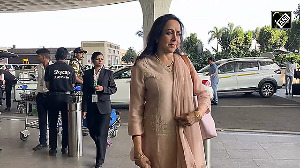

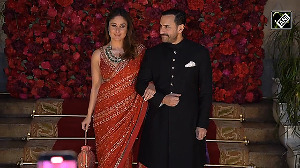
 © 2025
© 2025